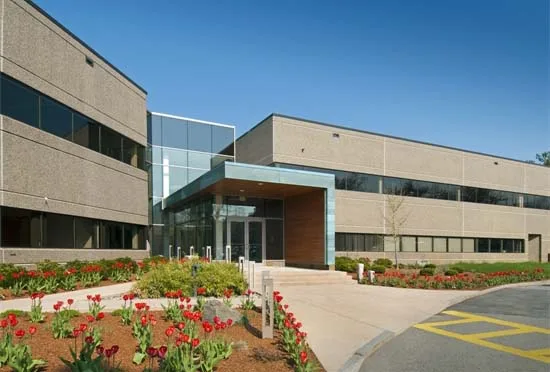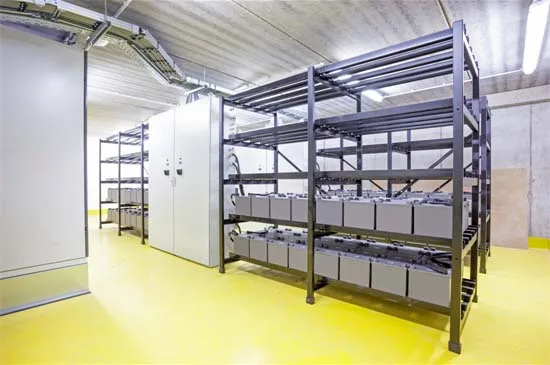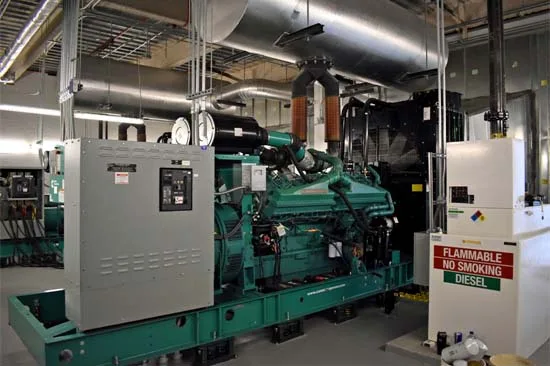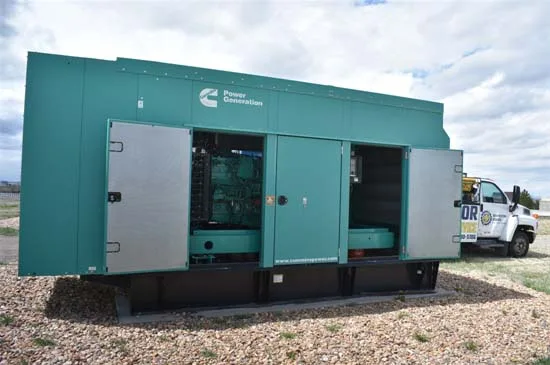Backup Power Determined by Industry
Commercial Building with Emergency Power
Buildings such as hospitals and data centers can be purposely designed for critical power use. These large systems are often referred to as backup power systems and have Uninterruptable Power Systems (UPS) and other advanced equipment installed. Other industrial buildings may only require backup power for a portion of their critical operations. Some only have emergency systems for safety installed.

The term backup power is generally associated with larger systems that allow for normal building operation during a power failure. Emergency Power is associated with buildings that have power for safety, elevator, and emergency lighting. The National Fire Protection Association (NFPA) defines the requirements for each style of building. They do not create a checklist for each business, but supply guidelines for creation.
As a facility manager, technician, or engineer, it is important to review previously-created checklists to be complete and correct. If one understands the creation process of the checklist, it is much easier to review an existing one. When an industry moves from one leased building to another, all emergency or backup power maintenance and testing documents should be reviewed for accuracy. Sometimes these documents are not available or do not exist. In this instance, a new one must be created.
Steps for Designing a System Checklist
- Equipment List Creation – Includes generator(s), Automatic Transfer Switch (ATS), circuit breakers, controls & distribution panels. Many larger systems and indoor generators have supporting or auxiliary systems, consult building electrical schematics and plans for identification. Note model numbers, serial numbers, etc. for each piece.
- Create Maintenance Checklist – Equipment manufacturers publish maintenance required to ensure proper operation. Acquire all information. Buildings with critical power demands may have multiple checklists divided into systems. These lists can include industry-specific checks that are not covered in manufacturer information.
- Maintain, Test & Document – All tasks, inspections, and tests must be completed by qualified technicians and documented.
Much of the time, the emergency or backup power system is beyond the capabilities of the company’s staff. Generator Source has more than 35 years of experience in the generator field. We can provide maintenance, testing, and troubleshooting services for your generator and systems. Contact Us for more information.
Buildings with Critical Power Requirements
UPS Batteries and Control Cabinet
Any industry that cannot afford to lose power for any amount of time falls into the critical power requirement scheme. Hospitals, data centers, pharma production, communication complexes, correctional facilities, and steel foundries are a few examples of these businesses.

The system concept is the same for all critical power requirements. Maintain operational power when utility power fails without any loss to designated equipment. All systems contain the following configurations:
- Generator – Commonly diesel or Natural Gas (NG) fueled engine. Multiple generators can be operated in parallel for system demands.
- UPS – Termed battery backup. Accepts the load during a power failure while generator(s) starts.
- Distribution & Controls – Circuit breakers, distribution panels with digital control capabilities.
Most of the equipment in each of the above systems is represented by needed maintenance and testing. Different generator application maintenance and testing are covered below.
UPS Components for the Checklist
These systems are designed to meet a specific building need. The configuration can change, but some of the basic equipment to be added to the checklist are:
- Batteries – Supply momentary power to the grid during a utility failure as the generator starts to assume the load. Can be lead-acid or Ni-cad in construction.
- Battery Charger – Sometimes termed converters. Charges battery bank. Can have electronic monitoring and fault indication.
- Inverters – Change Direct Current (DC) current into Alternating Current (AC) for use in the grid.
- Automatic Transfer Switch (ATS) – Responsible for switching battery backup to the grid when power is lost. Once the generator has started, it transfers the load from the battery to the generator. When utility power is restored, it transfers from the generator to the main grid.
Distribution and Controls
Distribution panels have switches that supply power to main panels. The switches can be manual or have automatic control. Main panels have individual circuit breakers for circuit protection. Advanced controls consist of software programs that interface all of the systems and components together. This allows the operator the ability to control all of the systems from one vantage point. Each piece of equipment needs to be entered into the checklist with manufacturer recommended checks and industry required checks.
Indoor Generator Applications
Indoor Generator Configuration with Supporting Systems
Generators that are located indoors are isolated from weather conditions. Buildings specifically designed with critical power needs can have multiple generators controlled by a paralleling panel. It is not uncommon to have a redundant generator with the line-up.
The generator consists of an engine, alternator (generator end), and engine cooling system. All are mounted on a skid for installation and operational ease. The generator manufacturer supplies required maintenance checks. Industry requirements supply testing criteria to create the checklist with.

Each generator must have supporting systems to operate. The equipment from these systems must be added to the checklist. Some examples of the equipment in the supporting systems are:
- Exhaust System – Engine exhaust routes through mufflers then out of the building. Leak inspections during generator testing should be included on the checklist.
- Engine Cooled by Radiator – Engine radiator has outside fresh air access. Automatic louvers open when the engine starts. Component inspection and operational testing is included on the checklist.
- Engine Cooled by Heat Exchanger (HEX) – Generators that are located in spaces that do not have outside air access for radiator cooling employ a HEX configuration. One example is; engine coolant is passed through a HEX to be cooled. HEX use supply water routed through chillers or cooling towers to cool the engine coolant. This is an advanced system that generally has a dedicated checklist.
- Fuel Supply System – Day tanks supply the generator engine running needs. When the day tank drops below a predetermined level, a pump initiates and fills the day tank from the primary tank. Can require more than one checklist. Fuel quality tests for day tanks and primary tank can be one. Inspection and testing of all equipment within the system are the second.
- Paralleling Panels – Allow more than one generator to operate in parallel to supply the grid. Panels should be cleaned and tested per manufacturer’s recommendations.
- Operating Parameters and Inspections – When the generator is operating during a power failure, the system should be inspected. Inspection of all systems during operation and the guidelines are supplied by each equipment manufacturer. All readings should be logged.
The creation of the checklist is largely equipment manufacturer and industry-standard compilation. Generator Source has been completing maintenance tasks from created checklists and can also aid in the design. For some examples of our projects, go to Project Profiles.
Outdoor Generator Applications
Generator in Sound Attenuated Container
The engine, engine cooling system, and alternator (generator end) are all mounted on a skid as in the indoor applications. A fuel tank is installed into the framework. A weather-tight or weather-resistant, sound attenuated container surrounds the structure. It is a self-contained unit ready to be set on a flat level surface and connected to the emergency or backup power grid.
Multiple generators can be operated in parallel. Power from each generator can be routed into a building with controls capability. The container is supplied to the generator manufacturer by an outside vendor. They publish maintenance to be performed outside the manufacturer required generator maintenance. Extreme weather conditions also contribute to tasks to be completed. Some of the checks can include:
- Container – Door locks and doors function. No outside water leaks. Interior lights function and engine start batteries are charging.
- Fuel System – Fuel tanks are full. Water contamination of fuel testing recommended. Fuel analysis for debris and foreign matter.
- Cooling System – Radiator free from debris. Cooling louver test. Inspect all mechanical components for wear.
- Cold Weather – Engine block heaters in operational condition and powered throughout winter season. Snow and ice cannot build-up over cooling louvers, intake vents, exhaust or doors. Fuel may need to be treated in extreme cold conditions.
- Controllers – Controller panels that are outdoors must be inspected for weather-tight integrity. All equipment within the controls and distribution family must be maintained and tested in accordance with requirements.
- Operational Tests – Standard engine and generator tests. Fuel level in tank must be checked during operation. Fuel vendor information should be available. Area should be obstruction free.

Summary
When reviewing or designing a checklist for a backup/emergency power system each component must be maintained and tested. All equipment, from generator controls to supporting systems are interfaced and connected together as links in a chain. If one link in the chain is not maintained and tested, it can fail. One break in the link of the power generation chain can cause generator shutdown during a power failure. Analyze the complete system, break it down into operational divisions, and create the checklist.